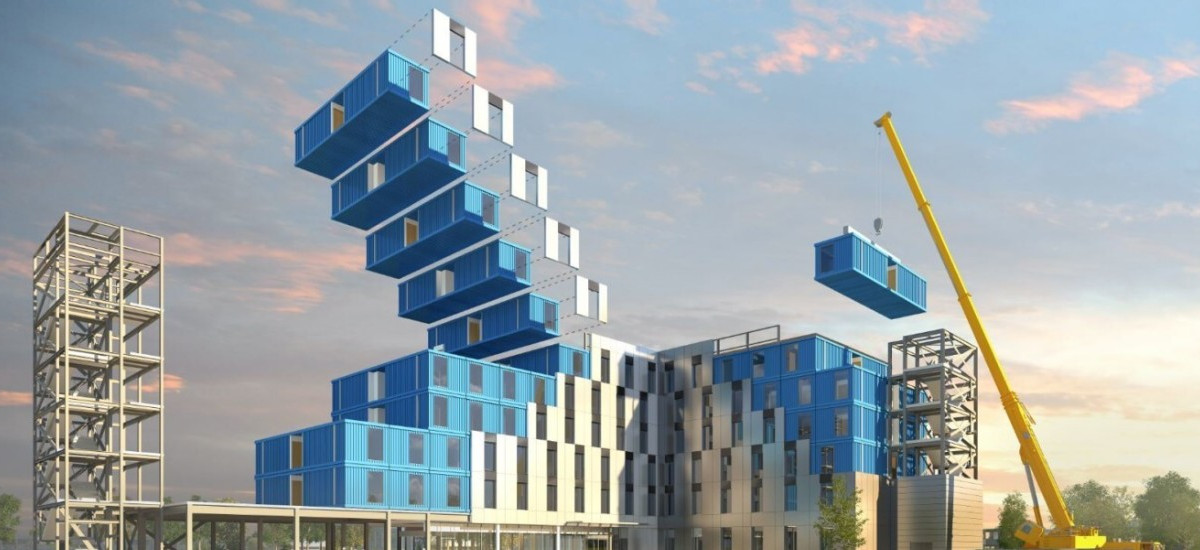11/10/2022
Modular construction, a process that allows several parts of a building to be constructed off-site and then delivered and assembled on site, is becoming increasingly popular in the construction industry.
The reasons for that are straightforward:
- faster and more economical construction,
- the possibility of building on sites that are difficult to access,
- buildings which are adaptable in time,
- an ecological building method since the modules are manufactured in the factory reducing the waste and pollution on site.
While in the past decades, the technique has been primarily used for small residential construction projects, nowadays bigger and taller modular projects are rising such as hotels, offices, high-rise residential buildings etc.
Fire safety professionals are therefore driven by this increasing popularity into tackling the fire safety issues linked with modular construction, which was also a question raised by the “Department for Levelling Up, Housing & Communities” DLUHC on the gov.uk website on how buildings with such a structure should be handled.
At Efectis, one of the main issues that concerns us is the overall behaviour of the building modular structure in the event of a fire including the impact of the modules displacement on the connections between modules.
With our advanced capabilities in fire safety, combining modern testing facilities and a deep knowledge of fire safety engineering, we have developed new approaches to assess this specific form of construction and ensure it provides an appropriate level of fire safety. This includes complex 3D modelling study to learn how the modular structure would behave when exposed to a fire.
Our studies aim to assess the behaviour of the overall structure of the building in the event of a fire under:
- a standard fire scenario to check that the minimum specifications of guidance in terms of fire rating are met,
- and a realistic fire scenario considering several parameters such as the intended use of the building, the size of the compartment, the ventilation conditions, etc.
Our approach to assess the fire behaviour of a modular construction:
We start by reviewing the construction details to ensure that the structure and the compartments are correctly protected, to then analyse the fire test reports of the elements used to protect the structure and the compartments, while verifying that they are installed correctly and determining their thermal properties. Additional fire tests can be performed where gaps are identified to confirm the behaviour in both standard and realistic fire scenario conditions.
Afterwards, we assess the temperatures reached by the structure in the event of a fire when exposed to a conventional ISO 834 fire curve and to a realistic fire scenario, considering the protective elements of the structure.

Eventually 3D modelling th emodular construction using the latest fire engineering tools to assess the behaviour of the overall structure of the building given the temperatures determined earlier.

The main challenge is the performance of connections, which are used for fixing the modules to each other and transferring the horizontal loads back to the stabilising elements of the building. Differential heating, expansion of structural elements and second order effects (deformations causing initial loads to induce further stresses into the structure) are some of the main phenomena, which can lead to failure of connections and consequently compromise the fire resistance of the building .
At Efectis, we believe that finite element simulations are indispensable for understanding these complex phenomena and evaluating the impact of fire on the resistance of the structural elements that compose the modular construction. While modular construction is paving its way as a construction method for tall buildings, we are prompted by the challenge of evaluating the fire resistance of such type of construction.

